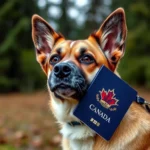
Introduction
The pet hotel industry has gained tremendous traction over the past couple of decades, transforming the way pet owners approach the care of their furry companions when they are away. Pet hotels offer specialized services, from boarding and grooming to training and daycare, ensuring pets receive the love and attention they deserve while their owners are occupied. This industry has evolved remarkably from the traditional boarding kennels, which were often limited in scope and services.
Understanding industry statistics is crucial for both pet owners and business owners alike. For pet parents, these statistics help in selecting the right facility that meets their pets’ needs. On the other hand, for business owners, having access to reliable data can influence strategic decisions, enhancing service offerings and improving customer satisfaction.
Current Market Trends in the Pet Hotel Industry
Growth of the Pet Industry
The pet industry has been experiencing exponential growth, with the American Pet Products Association (APPA) estimating that pet owners in the U.S. will spend over $109 billion on their pets in 2024. This growth reflects broader trends in pet ownership, with approximately 67% of U.S. households owning a pet, up from 56% in 1988. The increase in pet ownership correlates with a rise in disposable income and changing consumer attitudes toward pets, positioning them as integral family members.
Emerging Services in Pet Hotels
Pet hotels are diversifying their offerings to cater to the evolving needs of pet owners. Beyond basic boarding, many facilities now provide grooming, training, pet daycare, and even wellness services such as massage therapy. Technology is also making its mark, with many pet hotels adopting apps for booking, live streaming pet activities, and monitoring systems that allow owners to check in on their pets remotely.
Regional Insights
Market growth is not uniform across the globe. In North America, the pet hotel industry is booming, driven by high pet ownership rates and a willingness to spend on premium services. Conversely, in regions such as Asia and parts of South America, the pet hotel industry is still emerging. In these areas, pet owners may prefer traditional boarding options due to cost and availability, highlighting the importance of understanding regional consumer preferences.
Demographics of Pet Owners
Pet Ownership Statistics
The breakdown of pet ownership reveals interesting insights. Dogs remain the most popular pets, with about 63 million households owning a dog, followed closely by cats at 42 million. Other pets, such as birds, reptiles, and small mammals, also contribute to the growing pet ownership statistics.
When examining the demographics of pet owners, it is evident that younger generations, particularly Millennials and Gen Z, are leading the charge. This demographic is characterized by higher disposable incomes and a strong inclination toward spending on pet services, including pet hotels.
Consumer Behavior
Spending patterns on pet services show that pet owners are increasingly opting for premium services. A recent survey indicated that 71% of pet owners consider their pets as family members, leading to a willingness to spend more on quality care. Preferences for pet hotels versus traditional boarding options have shifted significantly, with many pet owners prioritizing facilities that offer personalized care, upscale amenities, and a home-like environment.
Financial Statistics of the Pet Hotel Industry
Revenue Generation
The financial outlook for the pet hotel industry looks promising, with average revenues per pet hotel ranging from $200,000 to $500,000 annually, depending on location and service offerings. Revenue growth rates over the past few years have consistently hovered around 10% year-over-year, driven by the increasing demand for specialized pet services.
Cost Breakdown
Operational costs for pet hotels can vary significantly based on location, facility size, and service offerings. Common costs include staffing, facility maintenance, insurance, and utilities. On average, a pet hotel might allocate 35% of its budget to staffing, 25% to facility upkeep, and the remaining 40% to marketing, insurance, and other operational expenses. Pricing models commonly used in the industry include daily rates, packages for extended stays, and subscription services for frequent customers.
Case Studies of Successful Pet Hotels
Examples of Leading Pet Hotels
Several pet hotels have successfully carved out their niche in the market. For instance, Barkley Pet Hotel & Day Spa in Los Angeles offers a luxurious experience with spacious suites and personalized care. Their unique selling point lies in their emphasis on wellness and enrichment activities, which sets them apart from traditional boarding facilities.
Another noteworthy example is Pawsitively Posh Pooch, known for its upscale amenities, including spa treatments and gourmet dining options for pets. These establishments highlight the potential for pet hotels to thrive by focusing on quality and customer experience.
Impact of Customer Reviews and Word of Mouth
The reputation of a pet hotel can significantly impact its success. Customer feedback, particularly online reviews, plays a critical role in shaping public perception. A study found that 85% of customers trust online reviews as much as personal recommendations. Consequently, pet hotels that actively manage their online reputation and respond to customer feedback tend to have higher retention rates and foster loyalty among pet owners.
Challenges Facing the Pet Hotel Industry
Competition Analysis
The pet hotel industry faces stiff competition from traditional boarding options and pet sitters. As more pet owners seek personalized care for their pets, market saturation has become a concern. This saturation can drive prices down, forcing pet hotels to differentiate themselves through unique service offerings and exceptional customer service.
Regulatory Challenges
Navigating the regulatory landscape can also pose challenges for pet hotels. Compliance with health and safety regulations is paramount, requiring facilities to maintain high standards of cleanliness and care. Licensing requirements vary by region, adding another layer of complexity for new business owners entering the market.
Future Projections for the Pet Hotel Industry
Market Forecasts
Looking ahead, the pet hotel industry is projected to continue its upward trajectory, with forecasts indicating a growth rate of 15% annually over the next five to ten years. This growth will likely be fueled by increasing pet ownership and a rising trend toward premium pet services. Factors such as urbanization, which leads to more pet owners seeking convenient care solutions, will also contribute to this growth.
Technological Advancements
The future of the pet hotel industry will be heavily influenced by technological advancements. Innovations such as artificial intelligence, smart facilities, and enhanced customer engagement tools are expected to reshape the landscape. For instance, AI-driven monitoring systems can provide pet owners with real-time updates on their pets’ activities, further enhancing the customer experience.
Conclusion
The pet hotel industry is poised for substantial growth, characterized by evolving consumer preferences and an increasing willingness to invest in quality pet care. Understanding industry statistics plays a critical role for both pet owners and business owners in navigating this dynamic landscape. By staying informed on market trends, demographics, and financial insights, stakeholders can make informed decisions that benefit both pets and their caretakers.
The future holds exciting possibilities for the pet hotel industry, with technological advancements paving the way for improved service offerings. As pet ownership continues to rise, so too will the demand for high-quality, specialized pet care services, reaffirming the importance of staying attuned to industry developments.
References
- American Pet Products Association (APPA)
- Industry reports on pet ownership and spending trends
- Customer feedback surveys and analysis on pet service preferences









